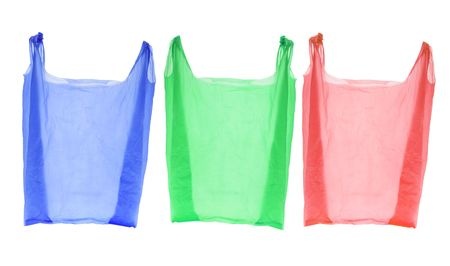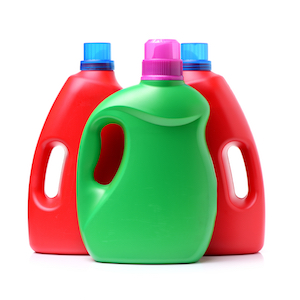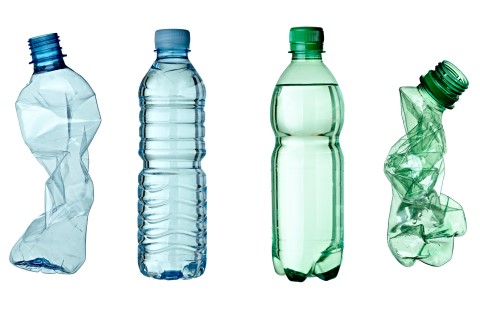Last Updated on May 3, 2021 by OJ Maño
Plastic recycling is the method of gathering waste plastic and reconverting them to new and useful plastic products. The world produces and makes use of more than a trillion pounds of plastic material. Recycling ensures that this massive amount of plastic does not go to waste. Instead, you can reprocess the materials to get other products. (Conserve Energy Future, n.d.)
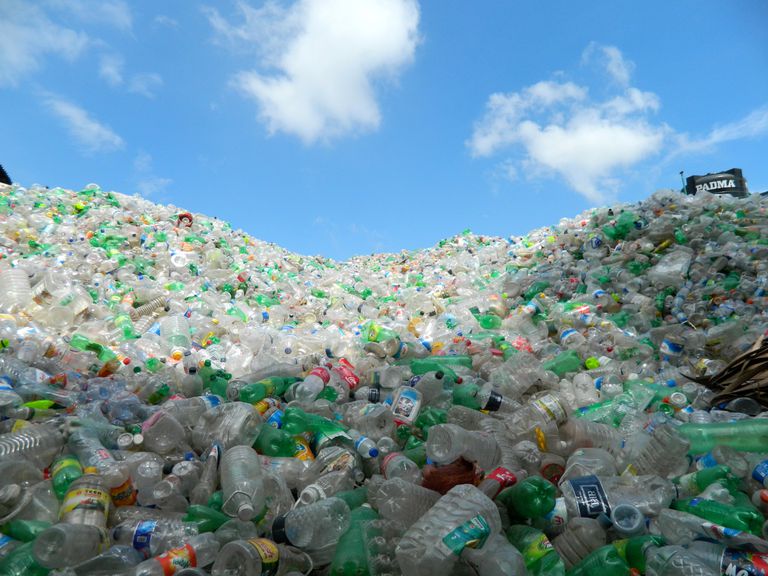
Background and Rationale
The Philippines is the 3rd largest contributor to marine plastic pollution, with a concentration of 0.28 – 0.75 million tonnes/year of plastic entering oceans. The Philippines generates an estimated 43,684 tonnes of garbage daily, including 4,609 tonnes of plastic waste, and improper management of it causes the trash to pile up on land, clog coastlines, and spill into the sea. (Sea Circular, n.d.).
The increased consumption of single-use plastic items and inadequate and ineffective waste management causing a huge amount of plastic waste to leak into the oceans, making the Philippines’ plastic pollution crisis worse year by year. Local and legislative measures have been put in place to limit single-use plastic in certain localities in the Philippines. However, with waste management policies and practices from the local government units falling short to keep up with the volume of single-use plastics that we are producing, we need to collect, reuse, and recycle this plastic waste. Thus, I want to propose to start this social enterprise that deals with plastic recycling.
Description of Product / Service
Collection Process
To kick-start the plastic recycling process, effective collection and segregation should be in place. The collection of single-use plastics will be targeted in the City of Malolos. The collection facility will be in the area near the largest school in the city.
Citizens of the city can drop off their collected single-use plastics. Institutions like schools or offices can also drop off collected plastics from their students/employees. Upon collection, they will be given green points that can be tracked in their profile and be exchanged later on for either recycled products or cash vouchers.
These have to be in multiple categories:
- Single-use sachets — these can be dropped off either in the form of filled bottle ‘eco-bricks’ (as per required weight); or just grouped and ready for shredding. (Note: Single-use sachets are not usually tagged as recyclable plastics since it is made up of different types of materials — laminated plastic film and aluminum. These mixed types of materials usually lend to a more complex recycling process.)
- PET (Polyethylene Terephthalate) bottles — PET is mostly used for food and drink packaging. These can be collected as is or crushed.
- HDPE (High-Density Polyethylene) containers — HDPE is mostly used for containers of common household/consumer items, like shampoo bottles, containers of liquid detergents, etc. These can be collected as is.
- LDPE (Low-Density Polyethylene) — LDPE is mostly used for bags (grocery, dry cleaning, bread, frozen food bags, newspapers, garbage), plastic wraps; coatings for paper milk cartons and hot & cold beverage cups; some squeezable bottles, food storage containers, and container lids. These can be collected flattened out (cleaned); or inserted into bottle eco-bricks, similar to single-use sachets.
- Other types of plastics are not as easily recycled. Initially, only these types will be considered for collection.
Shredding Process

The next step in the plastic recycling process is shredding or turning the plastic waste into plastic granules. This is with the use of a special plastic shredding machine. This prepares the used plastic waste into usable raw materials for the production of recycled plastic products. The shredded plastic needs to be kept in its respective plastic categories as well.
These plastic granules can then be used in the next step to be heated/remolded into other plastic products; or used as additives in making other products.
Recycling and Reselling Process
Eco-brick bottles can be distributed to different local government agencies and other social enterprises to construct walls, fences, and some of their construction projects.
The shredded plastic granules can be used as additives in construction materials or remolded into recycled plastic products. Some examples of these:
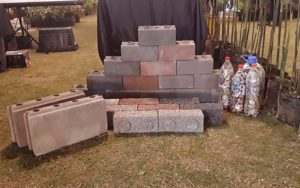
- Plastic-turned bricks — shredded plastic and sachets can be mixed with cement to make actual bricks. These plastic-infused bricks are reported to be 5 times stronger than regular hollow bricks and cost less on a per square meter basis. Each ecobrick disposes of about 100 pieces of shredded sachets in an eco-friendly, sustainable manner. (Sunstar Manila, 2018).
- Additives in asphalt pavements — Research has shown that normal asphalt can be susceptible to cracks, especially during extreme weather conditions. However, using waste plastic as an additive in asphalt reinforcement has shown significant improvement in its engineering properties, which enhances the modified asphalt resistance to rutting, fatigue, deformation, and moisture stability. Based on data of previous studies, 4% of waste HDPE is recommended as best content to achieve better asphalt performance properties in term of stiffness and rutting resistance, however; other had recommended waste PET up to 6-8% as an ideal modifier that increases fatigue life and, as such improve the long term performance and durability of the asphalt mixture. (Mashaan, Rezagholilou, and Nikraz, 2019). As such, the granulated plastics can be sold to asphalt manufacturers and contractors for their use.
- Recycled durable plastic products — These products can include school armchairs, plastic tables, garden pots, and other durable plastic containers. These by-products can be sold for additional funding/income and donated to partner schools that served as plastic collection venues.
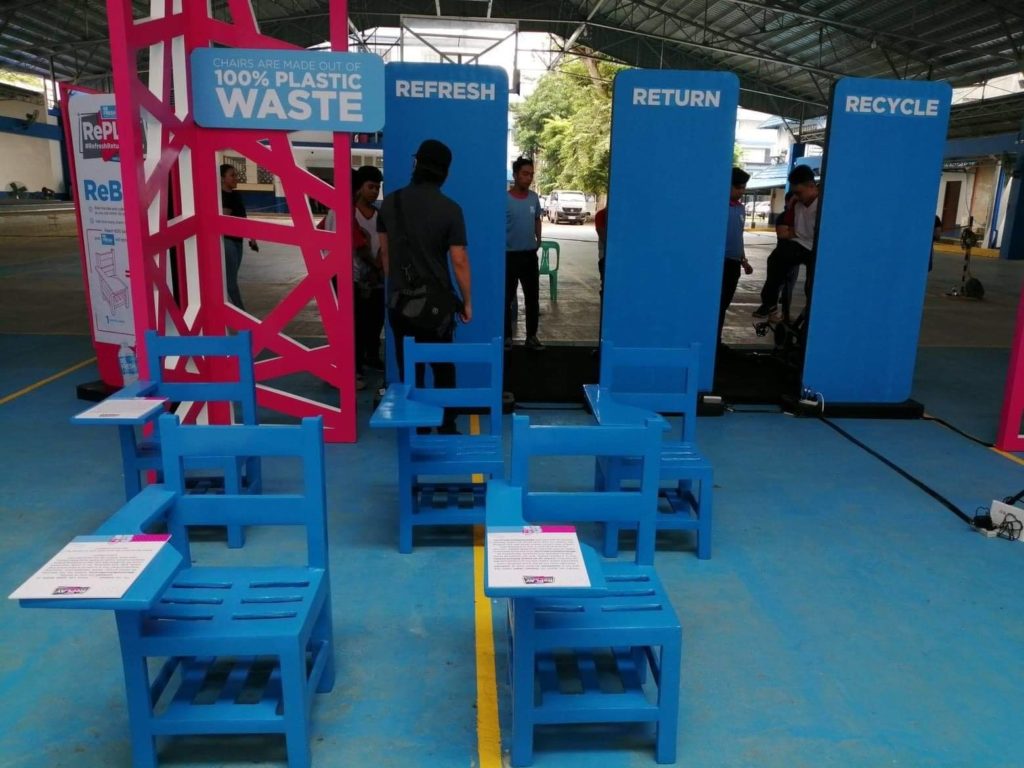
Benefits to Stakeholders
- To the local community, reduce single-use plastic waste that would either end up in the dumpsites or worse in our local drainage systems and waterways. The recycled plastic by-products can be opened for reselling to the people in the community. They can avail of the said products using their green points/cash vouchers that they’ve earned when they dropped off their single-use plastic waste during the collection process.
- To partner schools and establishments that serve as plastic collection venues — receipt of recycled plastic, durable products (such as chairs, tables) that they can use; or actual eco-bricks (both bottle or the type mixed with cement) for use in their construction projects.
- To initial funders or investors — the model can be replicated in other communities once they’ve received their investment return from the purchase of equipment needed. The money earned from selling recycled plastic products, eco-bricks, and asphalt additives can be used to purchase additional equipment. This can seed the same plastic recycling enterprise in a different community.
- To the consumers of the recycled plastic products, eco-bricks, and asphalt additives — these materials have already been proven as more durable than other alternatives in the market. These are also cheaper than the non-recycled alternatives.
Value Proposition
This plastic recycling social enterprise aims to serve the local community where it will be located. Three-fold key benefits to the local community:
- Environmental – reduction of single-use plastic has been a growing problem in terms of proper disposal.
- Social – the source of additional income for the local community, both in the form of either cash or recycled products that can be sold. They also get these technologies in exchange for their trash. The local community also benefits from the availability of low-cost construction materials that can be used for their projects for the benefit of the greater population in the community.
- Financial – income can be generated from the sale of recycled plastic products or plastic granules. This income can be used to recover the initial investment and also ensure that this enterprise is sustainable and even expandable to other local communities.
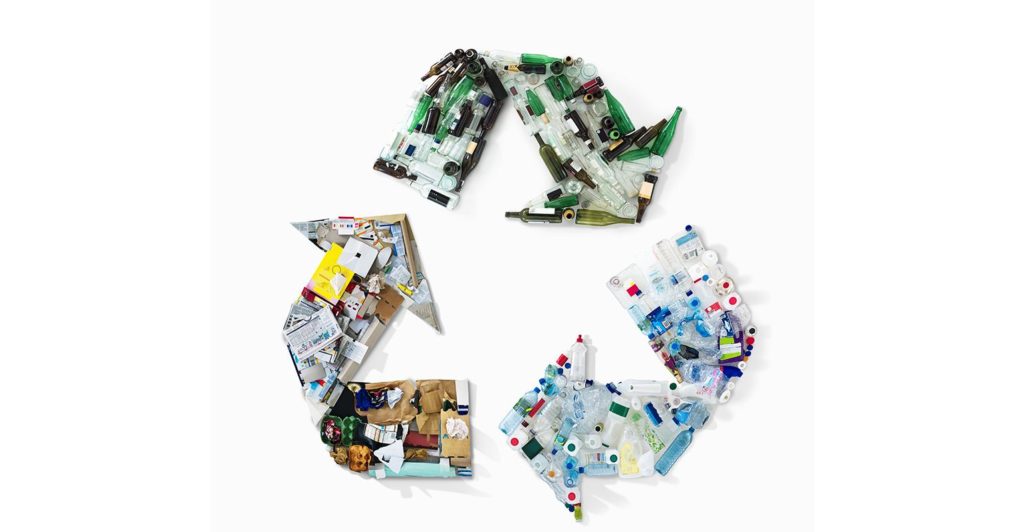
Read here other ways of ‘going green’ — use of green energy: Green Energy in Bulacan: Impressive Solar Farms, Hydroelectric and Biomass
References:
- Conserve Energy Future (n.d.). What is Plastic Recycling. What is Plastic Recycling and How to Recycle Plastic – Conserve Energy Future (conserve-energy-future.com).
- Sea Circular (n.d.). The Sea Circular – Country Profile: The Philippines. SEA circular Country Briefing_THE PHILIPPINES (sea-circular.org)
- W4C Waste 4 Change (n.d.). 7 Types of Plastic that You Need to Know. 7 Types of Plastic that You Need to Know – Waste4Change.
- Sunstar Manila (2018). First ecobrick hub seen to reduce plastic pollution. First ecobrick hub seen to reduce plastic pollution – SUNSTAR.
- Mashaan, N., Rezagholilou, A., & Nikraz, A. (2019). Waste Plastic as Additive in Asphalt Pavement Reinforcement: A review. (PDF) Waste Plastic as Additive in Asphalt Pavement Reinforcement: A review (researchgate.net).


